Comments (3)
Sofia Pereira
No more waste
Tina Fenton
Environmental awareness is on the rise
Rob Smith
Thanks Dimitar, God bless you

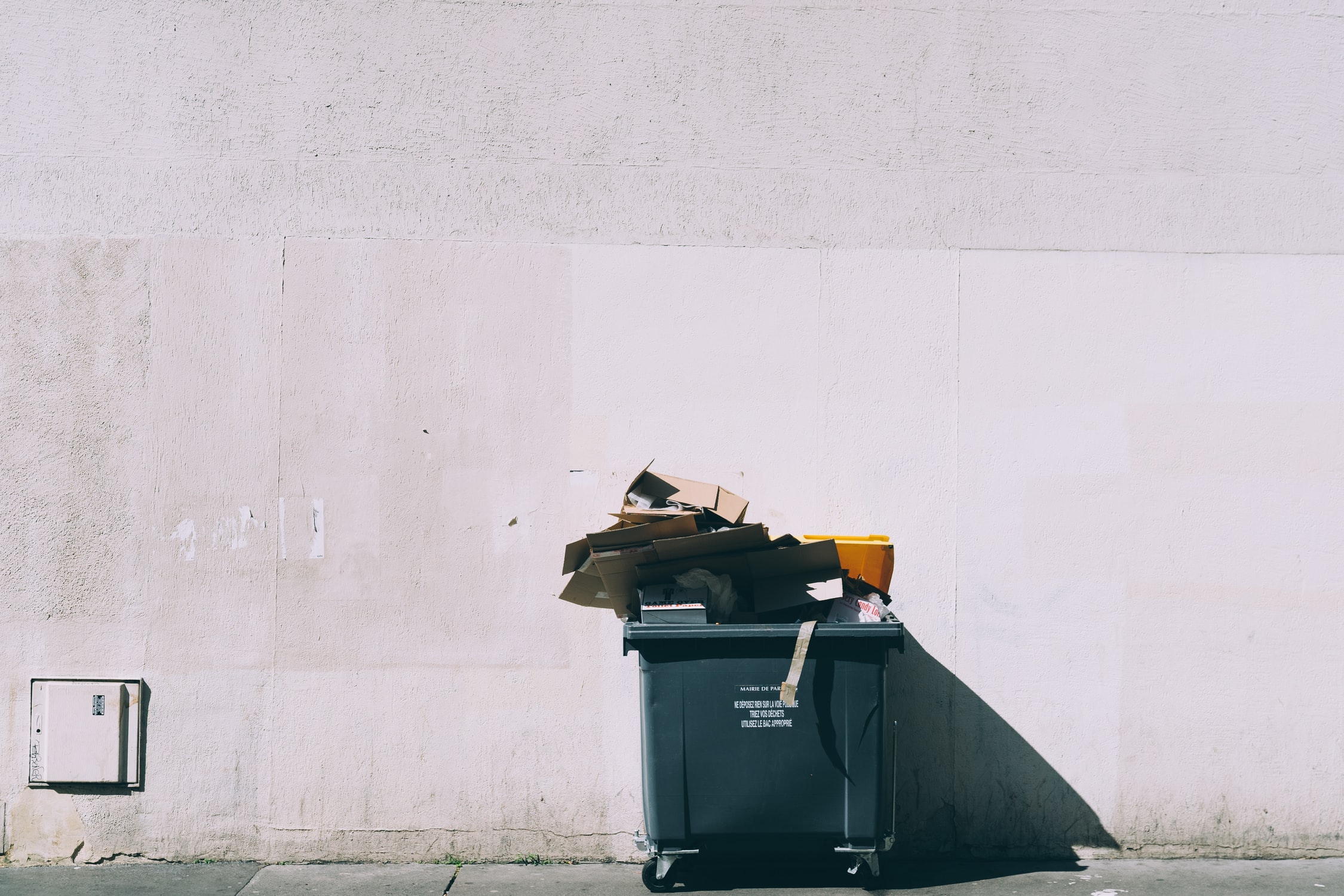
The cost for waste disposal grows yearly and so do “green” demands and the environment-friendly culture and customers worldwide.
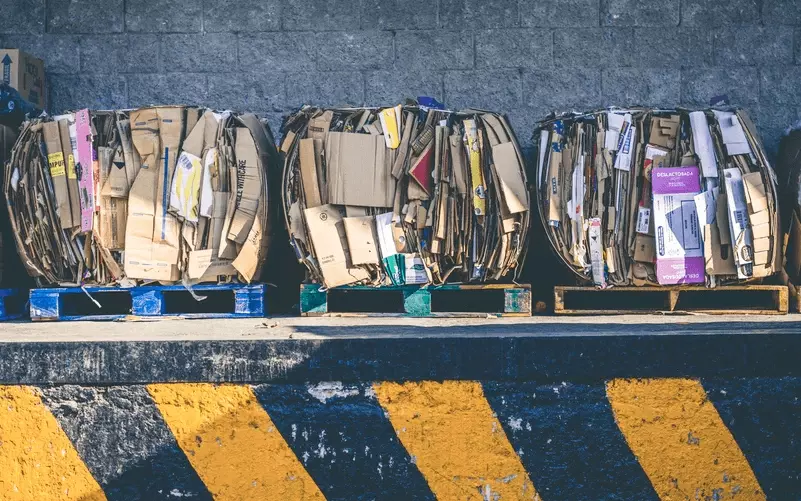
Thus, large, medium, and small businesses search for ways to reduce the volume of unwanted by-products and unusable leftovers regardless of nature and type.
Before we dive into the essence of the zero waste business philosophy, let’s look at a few graphs to get an up-to-date idea of where it comes and where it’s headed.
We use Google Trends to get an idea of the big picture.
If we look back at the time of the last economic crisis starting around 2007, we see the birth, rise, and steady growth of consumer interest in zero-waste ethics and practices:
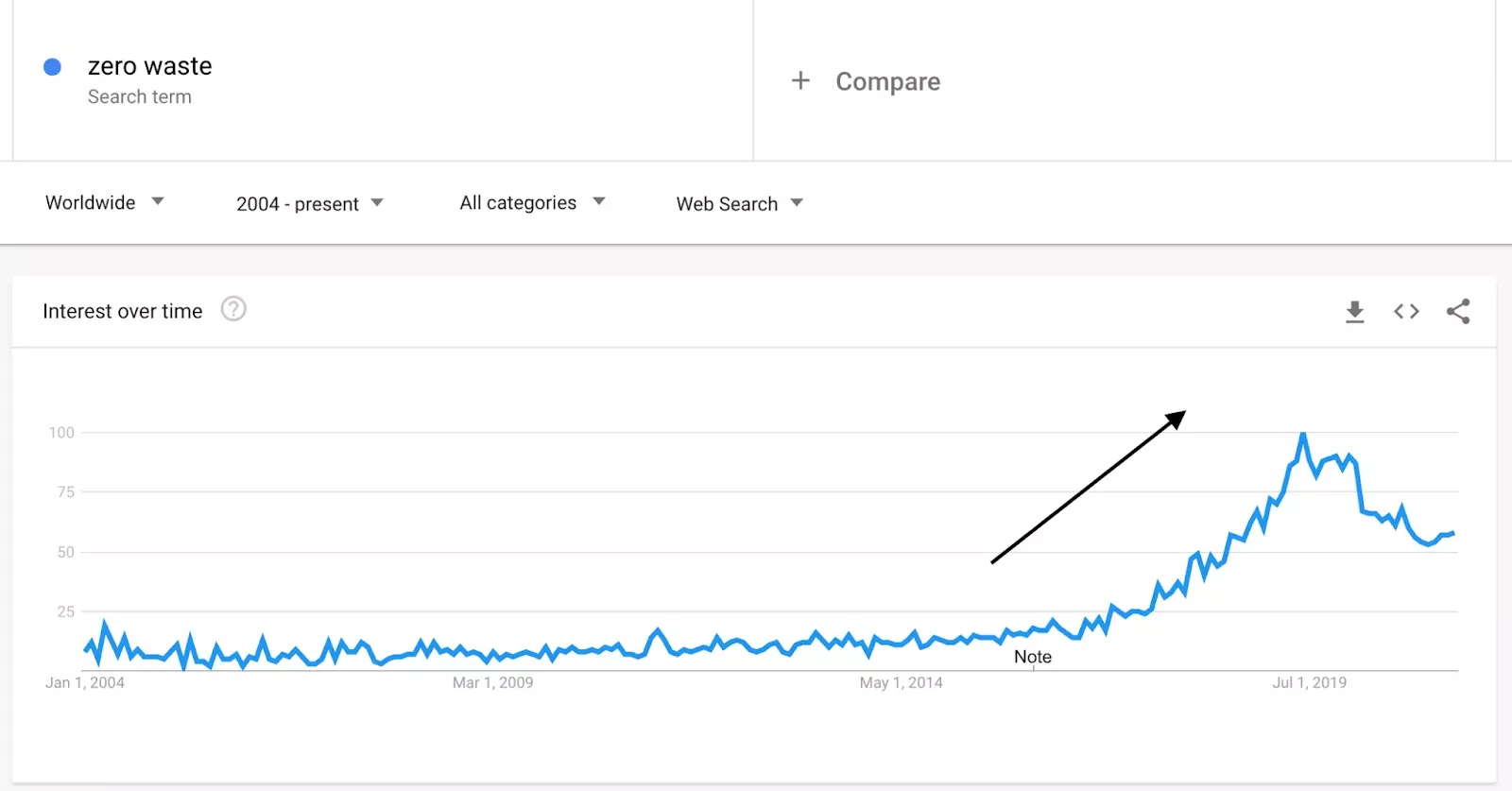
Source: Google Trends
And here’s the growing trend on the side of business & supply:
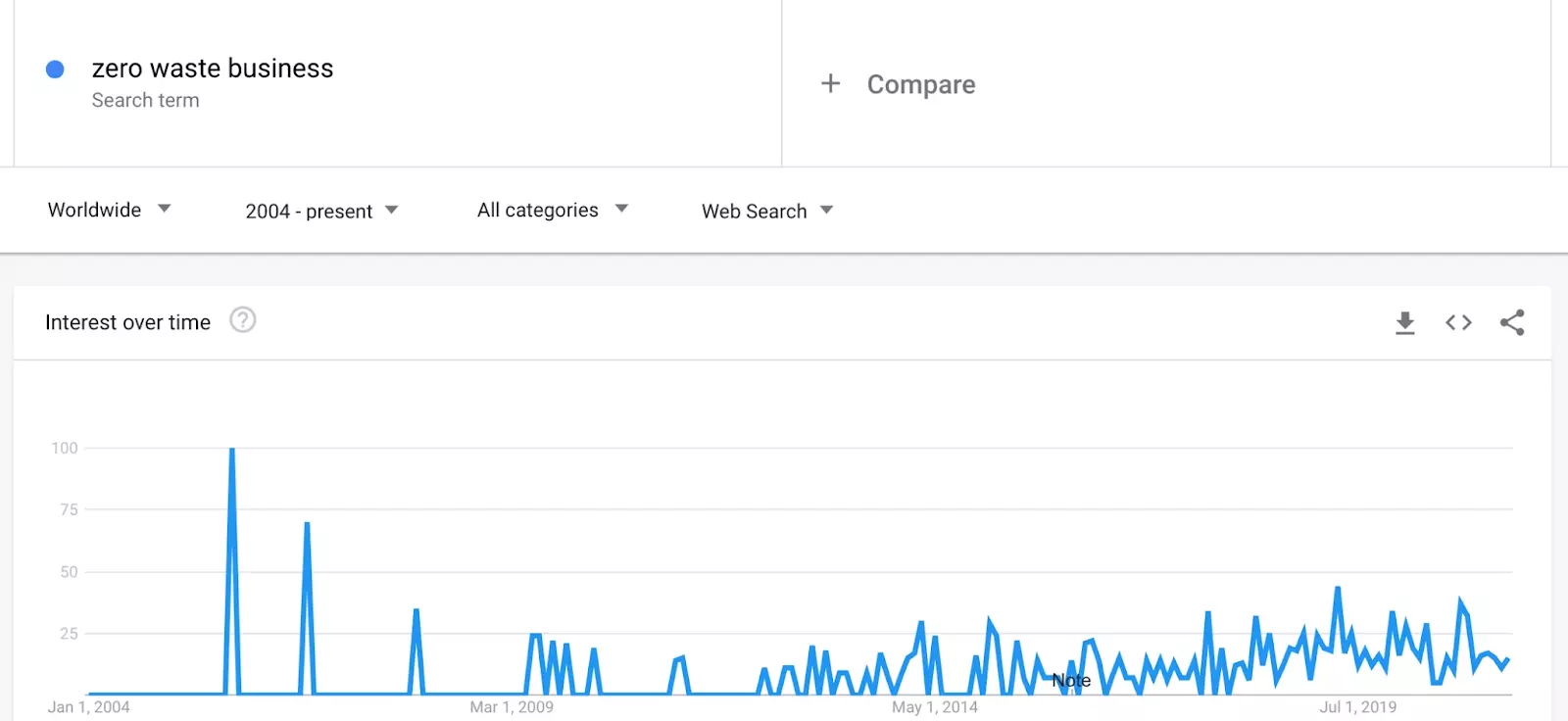
Source: Google Trends
As you can see for yourself, escaping pollution and rubbish make lucrative sense for businesses of all types and sizes. That’s why companies big or small should and aim at investments in zero-waste solutions or at least zero-landfill (picture the graph and come back to it when you get the full guide).
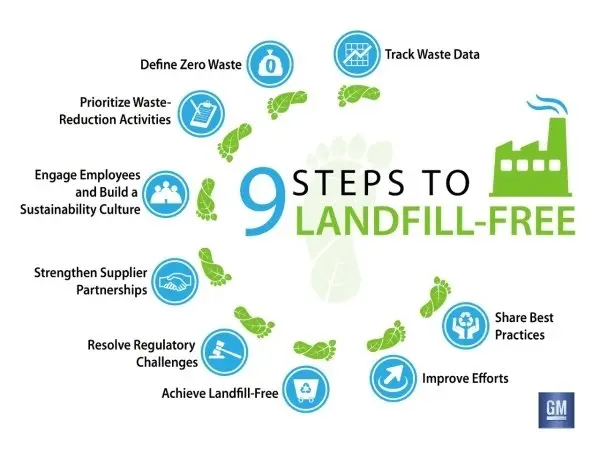
We’ll get back to this in a minute.
The zero-waste business design is to function without the systematic production of waste and toxic materials.
The main goal of any company should be to conserve and reuse resources, thus achieving sustainable processes and growth. A business with zero-waste policies eliminates discharges to land, water, and air that are a threat to the ecosystem, wildlife, and human population. Gains expand to both nature and turnover, comments dumpster professional Luke Hancock from Bin There Dump That (USA).
To run a zero-waste business comes with a huge range of benefits. It cuts down your costs of waste disposal, taxes, and complications connected with the regulatory release of harmful emissions generated by waste.
Zero-waste companies brand and market themselves as “Green Businesses”, which raises both the value perception of products or services offered along with strong customer service grown to experience. This is not only eco-friendly but nourishes strong customer loyalty, often up to advocacy.
Most people won’t but many look for actual proof of “green” operations for a business they are open or want to support.
It’s a fact that sustainable companies earn the trust of customers, partners, and support from local communities. According to Escape Waste creator and zero-waste enthusiast Antonia Ko, investment in eco-friendly and zero-waste activities can play a role bigger than traditional marketing campaigns.
Along with “zero-waste”, you have “zero-landfill”. Let’s take a second look:
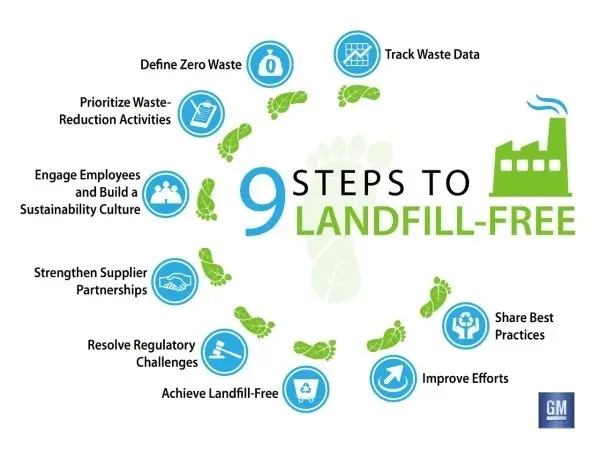
If a company achieves sustainability, zero-landfill can give a cutting-edge advantage over any competition. If a company eliminates the output of waste in a production process and thus improve material flow, you will lower the overall cost for business, not to mention opportunities for an integrated strategy for both production and marketing - a combo set for growth!
To achieve zero a waste business,
Now let’s have a granular look at each step:
To begin with, you must define a baseline to track your future progress.
To do so:
For example: if a trash bin is conveniently closer than a far away bin for recyclables, workers are more likely to throw away recyclable materials into the garbage.
The idea here is better understanding of how waste flows and how your business generates it.
Based on the size of your company, we recommend assembling a team or designating a single employee to monitor the current company state, to set goals, and implement sustainable plans. Such employees are effective in improving communication and dedication in all small, medium, or large businesses.
To be certain that initiatives are on track, use the classic project management approach and tools.
Related: How Artificial Intelligence Can Revolutionize Waste Management
After you analyze the flow of waste, your next steps are to:
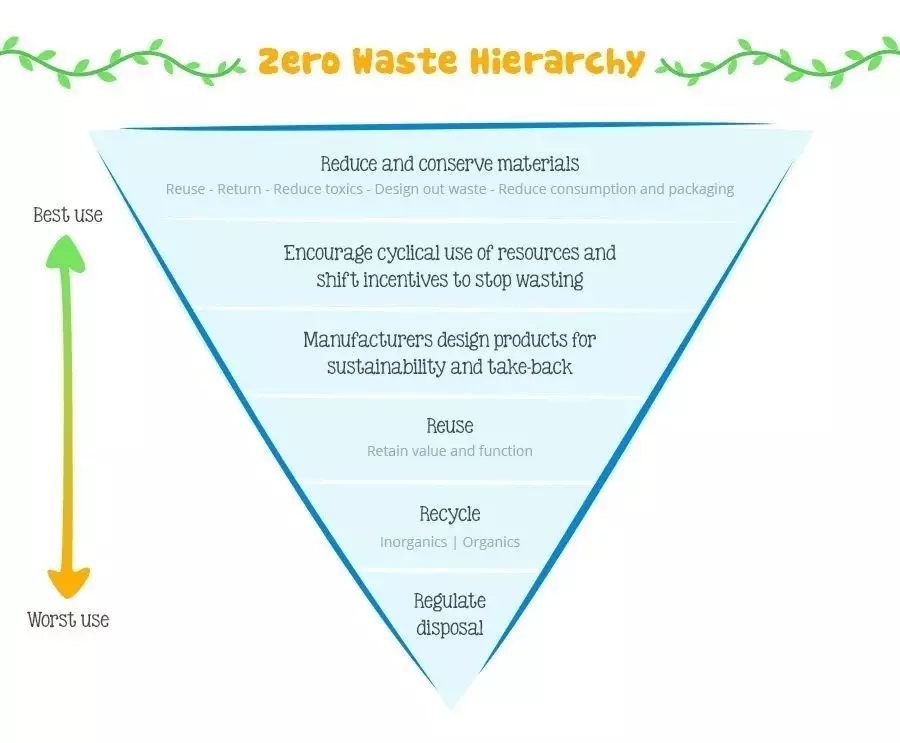
Source: Unsustainable Magazine
Another easy step towards a greener business operation is to reduce energy consumption:
Have in mind that some goals take more time to realize than others.
Request suppliers to switch towards eco-friendly, reusable packages and help prevent waste build-up.
Have in mind it might take a few months to coordinate and achieve. It could take much longer to change your production line to include refurbished and recycled goods.
Read also: Top Ways That You Can Make Your Business More Environmentally Friendly
Set goals for you and your employees and follow strategies to help people cut waste.
When implementing new policies, one of the most important steps is to engage employees in recycling at work. The point of view should switch from waste reduction to conservation of resources. Encourage employees to take a stand!
A key factor towards a zero-waste transformation is to raise employee awareness alongside preparation and resources.
Give incentives for participants engaged in zero waste programs.
Now that you have goals for waste reduction, apply the right plan of action to achieve them.
The three most important steps to undertake are:
These are difficult to achieve and do require the joined efforts of both business and suppliers you work with.
Techniques proven to reduce % waste:
In conclusion, zero waste is an achievement that embraces much more than just waste diversion, but to reach that achievement, diversion might be just the perfect place from which to start your initiative.
No more waste
Environmental awareness is on the rise
Thanks Dimitar, God bless you ![]()
Dimitar Karamarinov is an award-winning digital multi-instrumentalist coming into practice as early as 2006. Over a decade of audio, graphic, visual design, along with versatile know-how of business, marketing and communication. Dimitar grows experience with Entrepreneur Franchise 500, Inc 5000 and multi-continent brands under his belt.
Leave your comments
Post comment as a guest